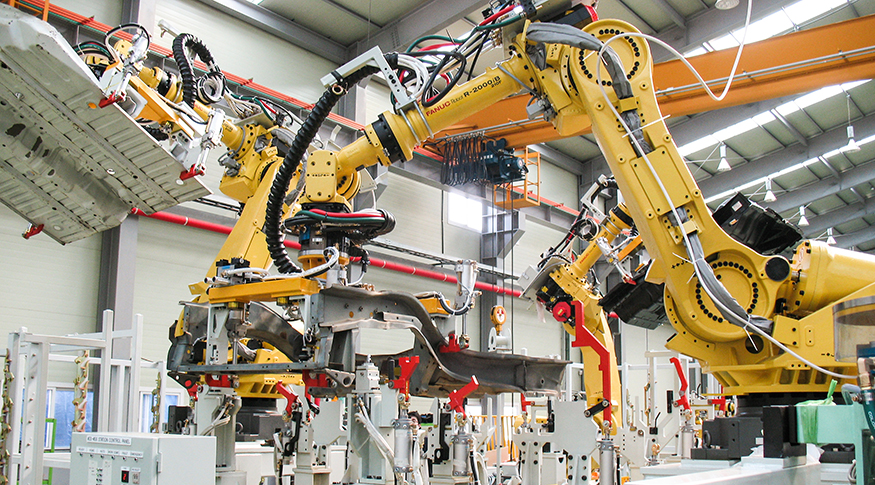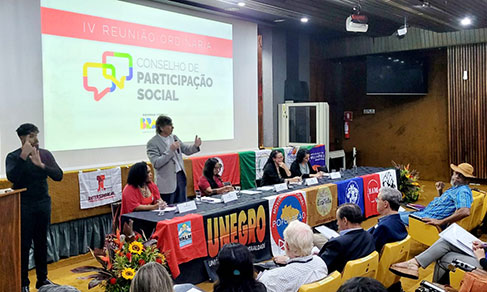Pintec 2017
With less investment, number of innovative companies drops to 33.6%
April 16, 2020 10h00 AM | Last Updated: April 24, 2020 01h59 PM

Economic downturn and investment decrease on capital goods had direct impact on innovative activities. According to the Survey of Innovation (2017 Pintec), released today (16) by the IBGE, the percentage of enterprises that innovated fell from 36% in the three-year period closed at 2014 to 33.6% (one out of every three) between 2015 and 2017, in a universe of 116,962 enterprises with ten or more workers.
Among the three sectors, industry - mining and quarrying and manufacturing - was the most affected, with the percentage of innovative enterprises falling from 36.4% in 2014 to 33.9% in 2017, the lowest level of the last three editions of the survey. The industry also decreased the revenue invested in innovative activities, a drop from 2.12% in 2014 to 1.65%.
The innovative enterprises of the sector of electricity and gas reduced from 29.2% to 28.4%, bu the percentage of the investments increased from 0.57% to 0.66% of the net revenue.
The sector of selected services, in turn, changed from 32.4% to 32%, with the intensity of investments falling from 7.81% to 5.79%. Selected service include edition and recording of music, telecommunication, information technology, data treatment and internet hosting, architecture and engineering, technical tests and analysis, research and scientific development.
Pintec manager, Flávio José Marques Peixoto, says that the drop is due to the reduction of investments in machinery and equipment, which has been throughout history, an instrument used to implement innovation, especially in processes. It also reflects the weak performance of the Gross Domestic Product (GDP) in the period, which recorded drops of 3.55% in 2015 and of 3.31% in 2016 and slight growth of 1.06% in 2017.
"It was a period of recession that influenced the investment rate - an index which results from the Gross Fixed Capital Formation in relation tot he GDP - dropping from 19.9% in 2014 to 17.8% in 2015, 15.5% in 2016 and 14.6% in 2017. Those last figures are important because Pintec captures the expenses with innovation just in the last of the three years analyzed. In this period, the contribution of machinery and equipment reached the lowest level (5.1%) in the composition of the Gross Fixed Capital Formation. That affected , as a result, the investment rate and the innovation rate", says Mr. Peixoto.
He adds that in Pintec the most important factor on the innovation rate are the innovations in processes, an initiative adopted by most of the enterprises. The amount of enterprises innovating just in processes fell from 17.5% to 14.8%, whereas those that innovate in process and product also fell from 14.6% to 13.7%.
"This drop in process innovation affected the rate. Curiously enough, innovation in products increased from 3.9% to 5.1%. One of the reasons is that in Pintec, innovation of processes is strongly linked with the acquisition of machinery and equipment, which fell in relation to the net revenue. In 2014, 1.02% of the net revenue of the enterprises were invested in machinery and equipment, a percentage that was reduced to 0.62% in 2017. In absolute numbers, the decrease was of R$33.5 billion in 2014 to R$21.2 billion in 2017. Conversely, the investments in internal research and development (R&D) accounted for R$25.6 billion and external R&D, R$7 billion, adds Mr. Peixoto.
Another factor that influenced the results was the exchange market behavior, with the depreciation of the real over the dollar. IN 2014, the average exchange rate was of R$2.35, moving to R$3.19 in 2017. The impact is due to the fact that most machinery and equipment used in innovative projects are imported.
"With the exchange appreciation, equipment imports fell. Besides, the high exchange rate also exerts impact on the reduction of imports of finished products. That could have stimulated the Brazilian enterprises to invest in production and innovation of products that used to be imported", says Mr. Peixoto.
Difficulties and obstacles to innovation
More innovative enterprises (81.8%) think that the economic risks were the factors that hindered the innovation process. This indicator occupied the first position in the rank, after the third and second positions in the periods of 2009-2011 and 2012-2014, respectively.
Conversely, high costs to innovate dropped from the first position in 2011 and 2014 to the second one in the 2017 Pintec, being pointed out by 79.7% of the innovative enterprises.
The lack of qualified personnel was pointed out by 65.5% of the innovative companies, becoming the third obstacle in the ranking, rising above the lack of appropriate sources of funding (63.9%), which fell to the fourth position.
The 2017 Pintec revealed that among the professionals employed in the activities of internal research and development (R&D), 61.3% were exclusively dedicated; and 38.7%, partially; against 61.4% and 38.6% in 2014, respectively. The electricity and gas sector concentrates the highest percentage of exclusive dedication, 72.1% against 57% in industry and 14.4% in selected services.
More than 70% of the persons employed in the activities of R&D had higher degree at least. The companies of electricity and gas recorded the highest percentage of employees with a high degree (69.3%) and Master's and PHD degrees (17%).
Although they still represent one forth of the persons involved in R&D activities, the female researchers are gaining room, representing 23.6%, against 20.9% in the previous three-year period.
Organizational and marketing innovation
As a whole, enterprises that carry out technological innovations (of product of processes) also carried out some kind of organizational or marketing innovation. In the 2017 Pintec, more than half of the innovative enterprises carried out non- technological innovations, with a highlight to the management techniques and methods for work organization.
This edition of Pintec reported an increase in the percentage of innovative companies that carried out biotechnology activities (4.6% against 3.4% in the previous period) and nanotechnology activities (2.3% against 1.8%). "In both cases, these activities were mostly developed in larger enterprises," claims Mr. Peixoto.
The survey also pointed out that 15.6% of the innovative enterprises carried out some kind of innovative activity in partnership with other organizations. In the sector of electricity and gas, the percentage increased from 55% in the 2012-2014 period to 70.1% in 2017. In industry, it changed from 14.3% to 14.9%. Suppliers were the major partners in both sectors. In Selected services, the percentage fell from 23.6% in 2014 to 18.4% in 2017. In this sector, the interaction with clients and consumers was the major form of partnership.
As to information sources, the Internet and clients keep acting as the major sources of industry and selected services. In the sector of electricity and gas, the sources come from suppliers and other companies within the group.
Regionally, more than 60% of the expenditure with innovative activities are concentrated in the Southeast. Just São Paulo (41.7%) and Rio de Janeiro (9.7%) account fro half of the expenses on innovation. The South Region accounts for 20%, the North Region, for 7.8%, whereas the Northeast and the Central-West, for 6% and 3.6%, respectively.



















